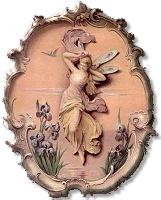
About the Victorian Era Sin in Chicago
The preachers in the Chicago area demanded that employers give women a decent living working wage so they would not be forced to resort to prostitution in order to provide for their families
this is a hard one to do … I do NOT want to shock anyone …
I think it will need to be in three parts …
1: Sisters Minna & Ada Everleigh
2: Preacher Intervention
3: Legislation
PART I: Sisters Minna & Ada Everleigh
Chicago’s Everleigh Club is the most famous brothel in USA history. It was located in the notorious Levee district (Chicago, IL).
Sisters Minna (1866-1948) & Ada (1864-1960) Everleigh ran the “club”. They hosted senators, foreign dignitaries, literary icons, actors (big surprise there!), business moguls, and on and on. Prince Henry of Prussia, Theodore Dreiser, Diamond Jim Brady, and other celebrities of reknown went to the Everleigh Club. The department store heir, Marshall Field Jr., was even shot there.
The Everleigh “butterflies” were expected to be well read and were even tutored in Balzac. Other requirements …
… look good in an evening gown
… be polite
… be there of their own free will (they wanted nothing to do with parents selling their children, white slavers, etc.)
… be at least 18 years old
… visit their doctor (that they kept on retainer) at least 1x/month
… no drugs/alcohol
The early history of the sisters is wrapped up in the War Between the States. The fortune of their family reflected what was happening financially to families all across the south.
 Harold Woodward wrote, “a grim reality of poverty & decay … Once-fertile fields were covered with scrub oaks and stunted pines, the landscape dotted with decayed fences, half-starved cattle, ramshackle houses and the remnants of crumbling mansions.”
Harold Woodward wrote, “a grim reality of poverty & decay … Once-fertile fields were covered with scrub oaks and stunted pines, the landscape dotted with decayed fences, half-starved cattle, ramshackle houses and the remnants of crumbling mansions.”
The sisters’ grandparents died. Their dad had to stop practicing law and farm the land. Agricultural prices were low. Taxes & interest were high. Income was scarce. Their father’s brother had stolen most of the family money secretly and moved to Missouri.
Their mother and little sister died when Ada was 12 & Minna was 10. Baby brother George was given to an aunt to raise. The sisters began to detach themselves from life. The family moved to Madison County (VA) where their neighbors were former Virginia governor & confederate general (with 5 children). Visits to his mansion reminded them of everything they lost.
Lula, another sister, died and the family moved from Virginia to Warrensburg, Missouri, where their father had relatives. They grew up believing daddy was the only man that mattered … why marry?
Minna & Ada did marry, but needed to flee for their lives because of physical abuse.
The sisters concluded from their experiences that men were greedy, brutal, spend thrifts, and not to be trusted. A niece, Evelyn Diment, would later write to Irving Wallace in 1989 about her great aunts,
“They were struggling because they were at the end of the Civil War and there were very few ways to make money. Their plantation was lost because they couldn’t pay taxes. They began as prostitutes and they became madams. Their father put them in the business, and then these women made a marvelous success out of it … Southern families have a way of keeping things very quiet. And if anyone knew anything, they kept their mouth shut.”
The sisters provided for their family in the only way they knew how. They changed their last name. Their grandmother signed all correspondence with “Everly Yours” and the name of their new club was established: Everleigh.
Everleigh Club Admission: $10
Bottle of Champagne : $12
Dinner: $50
At a time when the average wage per week was $6, those visiting the Everleigh Club found they were spending anywhere from $200-$1500 per visit. If a patron only spent $50, they were asked not to return.
Was it right? …. NO
Do I approve of it? … NO
Can I understand it? … YES!
The business management skills and acumen of the sisters is undebatable.
Yes, they did much better than other “wayward” women of the Victorian era whether they were located in Chicago, Philly, NYC, Washington DC, major European cities, etc.
Even though their “business” prospered beyond what they dreamed, they do represent an important aspect of the Victorian Era.
Read Sin in the Second City!



